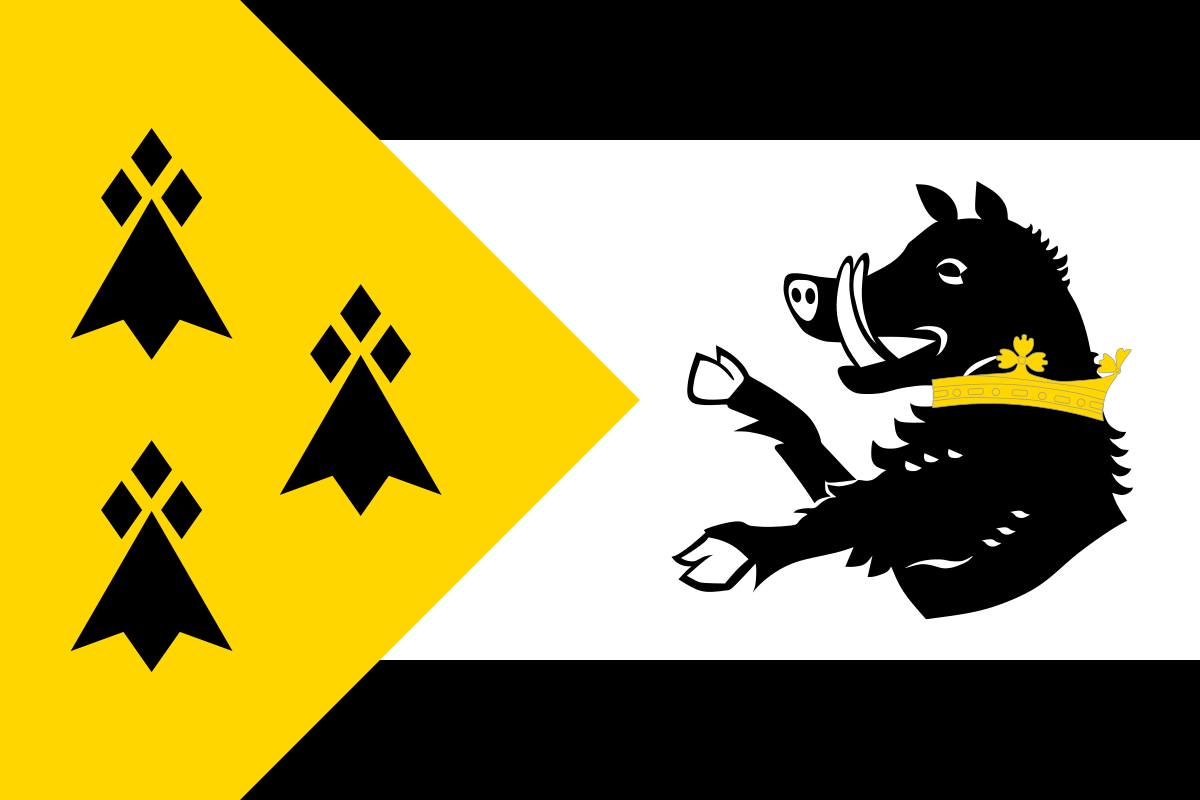Lordship of Chelgenn
Dragon of Île de Batz
Structure
Chelgenn is the largest and most populous region of the Biskonti Leon, as well as the seat of the Biskonts. As such, the position of the Lord of Chelgenn is at present synonymous with that of the Biskont of Leon.
Like much of Leon, Chelgenn nobility have an independent streak even when compared to the counterparts across Letha, resenting outside direction of their affairs. While the Biskont is the Liege, most nobles operate their smaller fiefdoms somewhat independently, while the Biskonts themselves are often at odds with their powerful neighbors in Kernev and Dreger, and especially the Dugs in the East.
The Biskonts exert their most direct power over the Elorn River, controlling the towns of Landern and Landvisio, as well as the coastline of the Rade de Brest. In the Northwest, the city of Kastell-Paol serves as a balancing power, larger and wealthier than the towns along the Elorn.
The ar goat and the coastline of the Painted Channel are ruled by lesser nobles and Korrigan Troupes, largely outside the direct control of the Biskonts. Much of the region, especially the functionally lawless Bro Bagan and the desolate Lordship of Aginense are beyond the regular direct control of the Biskonts.
Culture
Each year, the town of Kastell-Paol holds a festival of Lais, drawing in bards, musicians, and trouveres to compete for fame and prizes with narrative poems and songs.
History
The Kingdoms of Kernev and Dumnonia (Now Dreger ) can trace their histories back to the reigns of Gradlon Mwar and Gadeon, sons of Conan Meriadoc, but Leon, nestled between the two, has a different origin.
Even Mwar , first king of Leon, was also the King of Lyonesse, a petty kingdom along the Southern Coast of Albia. Pressured by the Courts of Summer and Winter to the North, and coastal pirates, he made the choice to evacuate his people Southwards to the relative safety of Gadeon's courth in Dumnonia. Instead, the fleet was captured by slavers on the Painted Channel, and taken to a remote location along the Dumnonian coast. Even, not willing to see his people sold as chattel, led a rebellion, seizing a number of slave ships and fleeing Westward. The rest of the Slavers rallied and gave chase. When all hope seemed lost, the rocks split apart to give Even's fleet passage into a natural anchorage, sealing behind them.
Saved by the miracle (later discovered to be a prototype seawall gate like those used in the construction of Ker-Ys to the South), the ships of Even's fleet sailed into Angel's Bay without concern of attack from the sea. These ships were converted into a shelter that would become the city of Tolente
Despite their initial success, Even knew that they were not strong enough to remain on their own. Leon submitted themselves to Kernev, swearing allegiance to Ker-Ys. The city of Tolente was constructed on the Northern Coast, an impressive port with sturdy ramparts and, like much of Kernev, complex networks of dams and dikes to allow for great control over the harbor. Leon prospered under Ys, its territory stretching from Kermaria to the Kastellin Basin and the island of Eusa. Tolente grew into a magnificent port, even serving as the seat of both Leon and Dumnonia for a time. The town of Landern on the Rade de Brest was founded during this time.
Tolente was destroyed during the Fall of Ys and Leon's power crumbled. It became, throughout the years, a vassal of Kernev , Dreger and independent, never remaining in one state for long. It was stripped of its County status, with the sovereigns becoming Biskonts. Despite this humiliation, Leon again gained autonomy as is today considered one of the major divisions of the Duchy,
Territories
The Lordship of Chelgenn, the largest sovereignty in the Biskonti Leon, is located in the Northeast of the Plateau de Leon. the Northwestern tip of the Armorican Peninsula.
Chelgenn's Western and Northwestern borders are taken up by its Leoned neighbors, the Lordship of Aginense and the Bro Bagan respectively, with the Painted Channel dominating the length of its Northern Coast.
The Montroulez River, ending at the city of the same name, defines its Eastern border, shared with the Barony of Blackwater, of the County of Dreger.
The Kontelezh Kernev lies to the South, with the Baronies of Kernevodez, Rouzig and the Viscounty of Poher serving as neighbors from East to West.
The Coastline of the Painted Channel, known in the region as the Golden Belt, rises in great cliffs above the water, is dominated by rolling pastures and bocage overlooking the sea. The land rises in elevation, the fields becoming forests and rocky moors as one ascends to the Southwest, where the foothills of the Meneziou Are begin.
High-Leon has three major settlements of note: Landern, Landivizio and Kastell-Paol. The remainder of settlements, largely located along the river valleys, are small towns, villages and hamlets.
Agriculture & Industry
The industry of High-Leon is largely concerned with the small scale production of hemp, flax and leather.
The town of Landivizio is the capital of the thriving Leoned horse trade, while Landern is a notable creator and exporter of canvas, rivaling Montroulez, as well as some smaller industries, such as paper mills.
The region around Kastell-Paol is the breadbasket of the Biskonti, and is reknowned for its produce, especially its artichokes. Kastell-Paol also supports a moderate ship-building industry.
Trade & Transport
Landern serves as the major port of the region

Type
Geopolitical, Lordship
Capital
Alternative Names
High-Leon
Government System
Monarchy, Absolute
Power Structure
Feudal state
Economic System
Mixed economy
Gazetteer
Currency
Major Exports
Kastell-Paol - Artichokes, Produce
Landern - Canvas (Major), Cattle, Horses, Paper, Leather
Landivizio - Horses
Major Imports
Wood, wine and ores from Akitania and Asturias.
Parent Organization
Location
Official Languages
Neighboring Nations



Comments